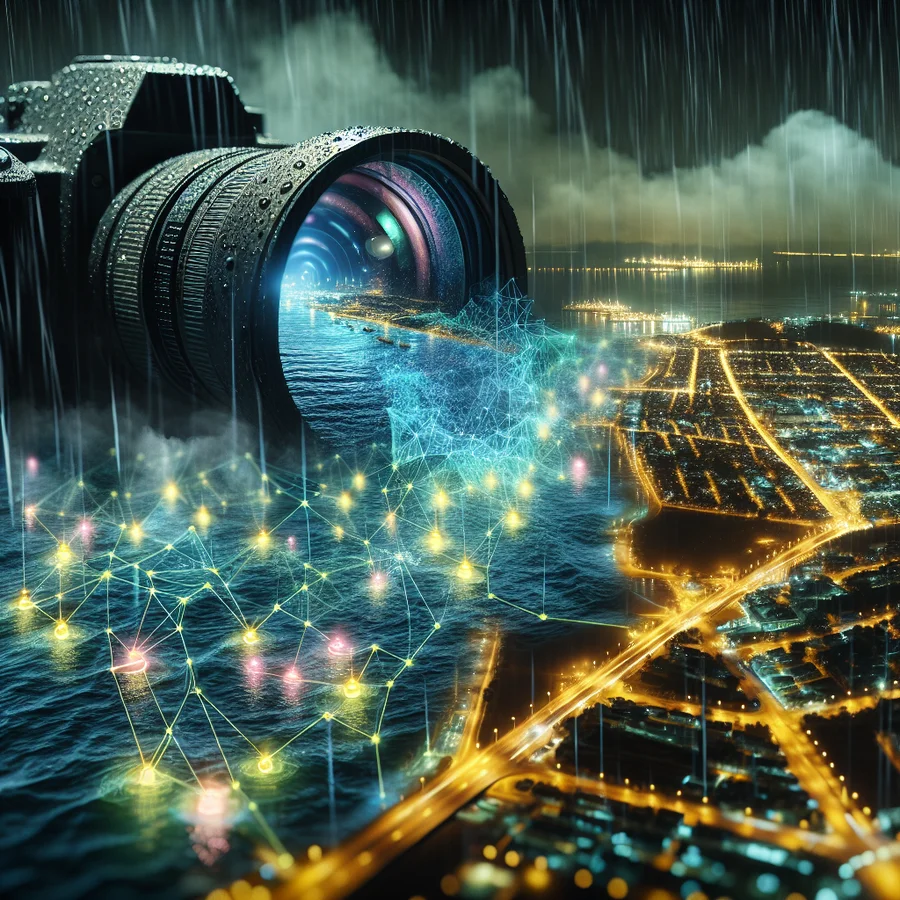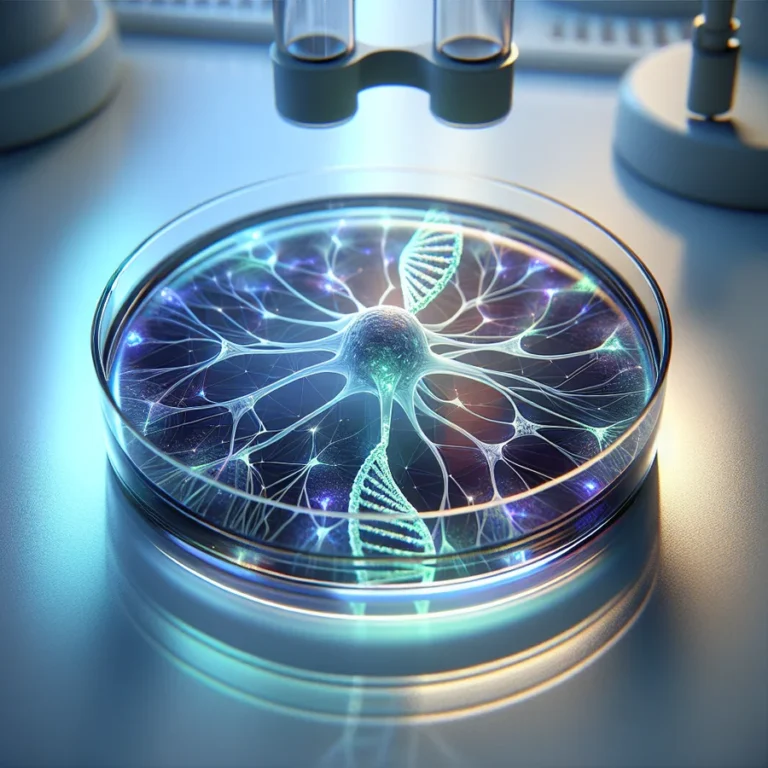AI in Disaster Management: Predicting and Responding to Crises
Natural disasters are becoming more frequent and intense. They cause immense suffering and economic damage. Fortunately, AI in disaster management is emerging as a powerful tool. It helps us predict, prepare for, and respond to these crises more effectively. This guide explores how AI is revolutionizing disaster management, saving lives, and building more resilient communities.
AI in disaster management offers solutions to enhance disaster management efforts. By using AI, we can improve data analysis, real-time monitoring, and decision-making. This leads to better predictions, quicker responses, and more effective recovery strategies. Let’s dive into the specifics of how AI is making a difference.
Understanding the Role of AI in Disaster Management
AI in disaster management is transforming how we handle crises. It’s not just about technology; it’s about creating safer, more prepared communities. AI’s ability to process vast amounts of data, identify patterns, and automate tasks is invaluable in disaster scenarios.
AI uses machine learning algorithms to analyze data from sources like satellite imagery, social media, and sensor networks. This analysis helps detect patterns and predict potential disasters faster and more accurately than traditional methods.
Key Benefits of AI in Disaster Management
Here are some of the key advantages of using AI in disaster management:
- Enhanced Prediction: AI can analyze historical data to predict future disasters.
- Real-Time Analysis: AI processes real-time data from various sources for up-to-date situational awareness.
- Improved Coordination: AI facilitates communication and coordination among different stakeholders.
- Optimized Resource Allocation: AI helps allocate resources efficiently during emergencies.
- Long-Term Recovery Support: AI aids in long-term recovery and resilience-building efforts.
These benefits highlight AI’s potential to transform disaster management from a reactive to a proactive approach. By leveraging AI, we can minimize the impact of disasters and protect vulnerable populations.
Predicting Disasters with AI: Early Warning Systems
One of the most significant applications of AI in disaster management is in predicting natural disasters. Early warning systems powered by AI can provide timely alerts, giving communities valuable time to prepare and evacuate.
Machine learning algorithms analyze vast datasets, including weather patterns, seismic activity, and historical disaster data. These algorithms identify patterns and anomalies that may indicate an impending disaster.
Examples of AI-Powered Early Warning Systems
Here are a few examples of how AI is used to predict different types of disasters:
- Weather Forecasting: AI models analyze atmospheric data to predict extreme weather events like hurricanes and floods.
- Earthquake Detection: AI algorithms process seismic data to detect patterns that may indicate an impending earthquake.
- Tsunami Prediction: AI systems correlate oceanic and seismic data to predict the likelihood of tsunamis.
- Wildfire Prediction: AI models monitor climate data and vegetation conditions to predict wildfire risks.
These early warning systems can significantly reduce the impact of disasters by providing timely alerts and enabling proactive measures.
The Role of AI in Weather Predictions
AI plays a crucial role in improving weather predictions. Machine learning algorithms process atmospheric data to forecast extreme weather events. These include hurricanes, tornadoes, and floods.
AI models offer higher accuracy in predicting storm trajectories, intensities, and landfall locations. Satellite images allow AI systems to predict the intensity of hurricanes. This gives authorities time to warn people and organize evacuations.
Earthquake and Tsunami Detection Using AI
While predicting earthquakes with complete accuracy is impossible, AI enhances early detection capabilities of seismic activity. Machine learning models analyze large volumes of seismic data to detect patterns indicating an impending earthquake.
Researchers use AI techniques to identify anomalies in the Earth’s crust, helping predict aftershocks or other seismic events. AI also improves tsunami forecasting systems by correlating oceanic and seismic data. AI-based alerting systems predict the likelihood of a tsunami after undersea earthquakes, providing lifesaving alerts for coastal communities.
AI in Improving Disaster Response: Real-Time Action
When disaster strikes, response time is critical. AI in disaster management can improve communication, decision-making, and resource allocation. This makes disaster management and relief efforts more effective.
AI-powered drones and satellite imagery provide responders with near real-time information about damaged areas. This is especially useful in remote or inaccessible locations.
Real-Time Mapping and Damage Assessment
Computer vision algorithms analyze images to assess damage and identify hotspots. For wildfires, AI can pinpoint active hotspots and predict fire spread, helping firefighting teams plan accordingly.
In floods, AI algorithms predict water flow and submerged areas. Authorities can assess the situation and prioritize rescue efforts in critical regions.
Optimization of Resource Allocation with AI
Resource allocation during a disaster is a logistical challenge. AI optimizes supply distribution for crucial items like food, water, medicine, and materials.
Machine learning models collect data from past disasters, population density, and transportation networks. This data helps determine how to deliver supplies efficiently. AI chatbots interact with affected populations, providing real-time information and services.
AI contributes to disseminating alerts, evacuation guidance, and answering questions. This allows human responders to focus on key interventions.
AI for Risk Reduction and Mitigation: Long-Term Strategies
AI in disaster management isn’t just about immediate response. It also plays a vital role in long-term risk reduction and mitigation efforts. By analyzing data and identifying vulnerabilities, AI can help communities build resilience against future disasters.
AI assists cities in building resilience by analyzing potential risks from various disasters. For instance, AI models can examine flood risks based on topographical data, rainfall patterns, and drainage system capacity.
Urban Planning and Infrastructure Resilience
Urban planners use AI to design flood prevention measures, such as optimized drainage systems and levees. AI models predict structural vulnerabilities to earthquakes, helping architects and engineers reinforce buildings and design disaster-resistant structures.
Climate Change Mitigation with AI
AI monitors and manages environmental factors contributing to natural disasters. It predicts how global temperature rise and deforestation increase wildfire risk. AI models analyze climate data, guiding reforestation efforts and improving land management to reduce wildfire frequency and severity.
Damage Assessment Using Satellite Images and AI
Assessing damage to homes and buildings after a natural disaster can take months. Researchers have developed a deep-learning model called DAHiTrA to address this challenge.
DAHiTrA uses high-resolution satellite images to classify different levels of destruction after natural disasters. This is helpful after large-scale events like Hurricane Harvey.
How DAHiTrA Works
The model recognizes geographic features and captures changes over time. It compares images of a building before and after a disaster to determine the level of damage. It can also be applied to civil infrastructure like roads and bridges.
Satellite images are available within 24 hours, and the models are fast. The day after an event, you can know how many buildings have been damaged and the extent of the damage.
Strengths of DAHiTrA
One fundamental strength of DAHiTrA is its ability to accurately determine building boundaries. This allows for more precise damage assessment. It also detects multiple types of damage, including collapse, partial damage, and water damage.
The model analyzes large volumes of satellite images quickly. This is essential for rapid response and recovery efforts. It allows for faster and more accurate damage assessments, helping communities and governments allocate resources effectively.
Proactive Recovery Monitoring After Disasters
Researchers also examine how people recover after a disaster, specifically in the short term after a hurricane. The study focuses on when people return home after evacuating and how long they can stay in their homes without moving out again.
The study uses location-based data to see how quickly people in different areas can do these things. It found that more than half of the census tracts in Harris County returned from evacuation within five days after Hurricane Harvey and stopped moving out after six weeks.
Socio-Demographic Factors in Recovery
Researchers examined how people of different socio-demographic statuses (like income or rental status) responded to flooding. By looking at how quickly they evacuated or relocated, the team could understand different recovery patterns in various subpopulations.
While the study shows it took longer to return in flooded areas than in non-flooded areas, there wasn’t a significant difference between the two areas regarding evacuation and relocation for low-income populations.
Insights from the Study
The return time of high-income census tracts was longer than that of low-income census tracts when flooded. This indicates the inability of low-income populations to evacuate and relocate. The study also found that areas with shorter return durations may not be more resilient to disaster. They may indicate challenges faced by low-income and minority populations that require additional assistance and resources.
AI-Driven Climate Resilience: Building a Safer Future
Looking ahead, the integration of AI in disaster management with IoT, 5G, and edge computing will enable faster, decentralized decision-making. This will lead to more effective and resilient communities.
Community-centric AI engages locals to co-design tools. Examples include flood prediction apps tailored to indigenous knowledge in Bangladesh. Global climate models use AI to simulate carbon reduction pathways, guiding policymakers in mitigating disaster risks.
The UN’s “Early Warnings for All” Initiative
The UN’s “Early Warnings for All” initiative aims to deploy AI-driven alerts worldwide by 2027. This could potentially protect 3 billion vulnerable people. These advancements will help us build a safer and more resilient future.
Leveraging AI for Effective Emergency Management and Crisis Response
Emergency response agencies can use AI to provide personalized care on a large scale during modern crises. Generative AI has emerged as a transformative force that can ease the pressure on emergency preparedness and response personnel.
Generative AI personalizes outputs while harnessing AI’s vast scalability. This provides an ideal combination that can help public emergency preparedness and response agencies.
How AI is Transforming Emergency Preparedness and Response
AI can bring new capabilities to emergency preparedness and response organizations when paired with other automation tools and human workers. These capabilities include:
- Enhanced Situational Awareness: AI-driven algorithms and real-time data analysis provide a clearer picture of what’s happening.
- Optimal Resource Allocation: AI’s data processing abilities help select the optimal course of action for resource allocation.
- Strengthened Preparedness: Generative AI can improve training simulations by creating realistic scenarios and dynamic challenges.
- Seamless Access to Multiple Government Services: AI can rapidly assess needs and link data from different government agencies.
Challenges and Ethical Considerations of AI in Disaster Management
While AI in disaster management offers numerous benefits, it’s essential to acknowledge the challenges and ethical considerations associated with its implementation. Addressing these issues is crucial for ensuring that AI is used responsibly and effectively.
AI models rely on high-quality data, which may be lacking in disaster-prone regions. AI models require periodic updates to maintain accuracy as environmental patterns change due to climate change.
Data Privacy and Algorithmic Bias
Using AI in disaster response raises ethical issues. The implementation of AI technologies raises privacy concerns, especially with drones and real-time surveillance in emergencies. AI’s role is still built upon predicting and advising decisions. Human judgment and oversight are crucial in decision-making, especially in life-or-death situations.
Infrastructure Dependency and Accessibility
AI relies on stable power and internet, which are often compromised during disasters. Addressing these issues requires transparent AI governance, inclusive data practices, and collaboration between governments, tech firms, and local communities.
Case Studies: AI in Action During Disasters
Several organizations and governments are leveraging AI in disaster management with remarkable success. These case studies highlight the practical applications and benefits of AI in real-world scenarios.
Maersk uses AI to optimize its supply chain operations. By employing AI for route planning and inventory management, Maersk reduces its environmental impact and enhances its resilience to disruptions caused by natural disasters.
AI in Government Crisis Response
Governments are also harnessing AI to enhance emergency management. AI tools have improved crisis response during the Turkey-Syria earthquake. They provided critical insights that aided efficient resource allocation and victim rescue efforts.
AI-Enhanced Disaster Response
Research has demonstrated that AI can significantly improve the effectiveness of disaster response. AI-driven platforms predict the impact of natural disasters and optimize the deployment of emergency resources. This was evident in the response to the Turkey-Syria earthquake, where AI helped streamline rescue operations.
The Future of AI in Disaster Management
The potential of AI in disaster management is vast and continually evolving. Future advancements will include more sophisticated predictive models, enhanced real-time analytics, and greater integration with emerging technologies like the Internet of Things (IoT) and blockchain.
These innovations will further improve the efficiency and effectiveness of disaster response efforts. AI is set to play a game-changing role in transforming disaster management and enhancing resilience.
Conclusion: Embracing AI for a Resilient Future
AI in disaster management is not just a technological advancement; it’s a transformative force that can save lives, reduce economic losses, and build more resilient communities. By embracing AI and addressing its challenges, we can create a future where we are better prepared for and more effectively respond to the inevitable crises that come our way.
From predicting disasters to optimizing resource allocation, AI offers unprecedented capabilities to enhance our disaster management efforts. By integrating AI with human-centric policies, we can harness its potential to create a safer and more sustainable world.
Key Takeaways
- AI enhances prediction, response, and recovery in disaster management.
- Ethical considerations and challenges must be addressed for responsible AI implementation.
- AI integration with IoT and other technologies will drive future advancements.
- AI is a cornerstone of global resilience in the face of increasing disasters.
AI in disaster management is a critical tool for building a resilient future. By investing in AI technologies and data infrastructure, we can better prepare for and respond to increasing natural disasters. While AI cannot prevent natural disasters, it can help us predict them, react faster, and build more resilient communities.
FAQs about AI in Disaster Management
How does AI help in predicting natural disasters?
AI algorithms analyze vast datasets from various sources, including historical weather data, seismic activity records, and real-time sensor inputs. This helps identify patterns and anomalies that may indicate an impending disaster, allowing for timely evacuations and preparedness measures.
What role does AI play in improving disaster response?
AI improves disaster response by enhancing communication, decision-making, and resource allocation. AI-powered drones and satellite imagery provide responders with near real-time information about damaged areas, while computer vision algorithms analyze images to assess damage and identify hotspots.
How can AI contribute to long-term recovery after a disaster?
AI aids long-term recovery by analyzing data from past events to identify weaknesses in infrastructure and emergency plans, offering recommendations for improvements. This helps communities recover more quickly and build back better, ensuring greater resilience to future events.
What are the ethical considerations when using AI in disaster management?
Ethical considerations include data privacy, algorithmic bias, and infrastructure dependency. It’s crucial to ensure transparent AI governance, inclusive data practices, and collaboration between governments, tech firms, and local communities to address these issues.
Can AI be used to mitigate the impact of climate change on disasters?
Yes, AI can monitor and manage environmental factors contributing to natural disasters. It predicts how global temperature rise and deforestation increase wildfire risk. AI models analyze climate data, guiding reforestation efforts and improving land management to reduce wildfire frequency and severity.






